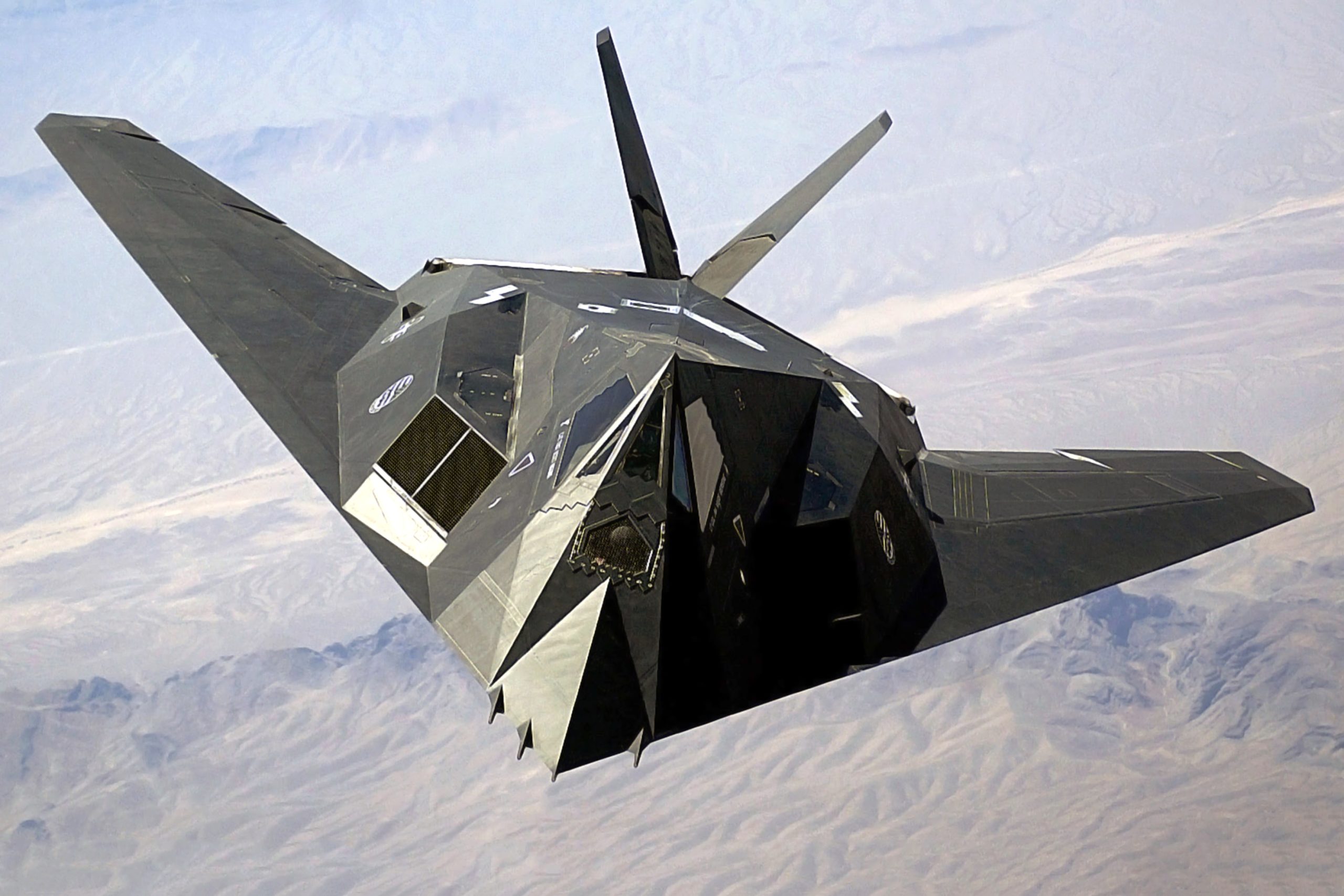
Lockheed F-117A Nighthawk
The F-117A is a symbol of American technological superiority during the Cold War.
The F-117A Nighthawk was built by Lockheed in response to a United States Air Force (USAF) need for a platform capable of sneaking into enemy air defense systems. A unique aircraft was created, which, thanks to its unusual shape and legendary combat effectiveness, entered the history of military aviation forever. The F-117A proved to be the first very low visibility (VLO) aircraft, commonly referred to as "stealth".
The experience of the Yom Kippur War (the war between Israel and the Arab coalition in 1973) showed that aviation was beginning to lose its "eternal" rivalry with air defense systems. Electronic jamming systems and the method of shielding radar stations by "unfolding" electromagnetic dipoles had their limitations and did not provide sufficient cover for aviation. The Defense Advanced Research Projects Agency (DARPA) has begun considering the possibility of a complete "bypass". The new concept involved the development of technology to reduce the effective radar reflection surface (Radar Cross Section - RCS) of the aircraft to a level that prevents its effective detection by radar stations.
Building #82 of the Lockheed plant in Burbank, California. The aircraft is coated with a microwave-absorbing coating and painted light grey.
In 1974, DARPA launched a program informally known as Project Harvey. Its name was not accidental - it referred to the film "Harvey" in 1950, the main character of which was an invisible rabbit almost two meters tall. According to some reports, the project did not have an official name before the start of the "Have Blue" stage. One of the Pentagon programs at the time was called Harvey, but it was tactical. It is possible that the spread of the name "Project Harvey" was associated with disinformation activities around the undertakings of that time. As part of the DARPA program, it requested technological solutions to help reduce the RCS of a potential combat aircraft. The following companies were invited to participate in the program: Northrop, McDonnell Douglas, General Dynamics, Fairchild and Grumman. Participants in the program also had to determine if they had enough resources and tools to build a possible ultra-low RCS aircraft.
Lockheed wasn't on the DARPA list because the company hadn't made a fighter jet in 10 years and it was decided it might not have the experience. Fairchild and Grumman dropped out of the show. General Dynamics basically offered to build new electronic countermeasures, which, however, fell short of DARPA's expectations. Only McDonnell Douglas and Northrop presented concepts related to reducing the effective radar reflection surface and demonstrated the potential for development and prototyping. At the end of 1974, both companies received PLN 100 each. USD contracts to continue work. At this stage, the Air Force joined the program. The radar manufacturer, Hughes Aircraft Company, also participated in evaluating the effectiveness of individual solutions.
In mid-1975, McDonnell Douglas presented calculations showing how low an aircraft's radar cross section would have to be to make it virtually "invisible" to the radars of the time. These calculations were taken by DARPA and USAF as a basis for evaluating future projects.
Lockheed comes into play
At the time, Lockheed's leadership became aware of DARPA's activities. Ben Rich, who since January 1975 had been head of the advanced design division called "Skunk Works", decided to take part in the program. He was supported by former Skunks Works head Clarence L. "Kelly" Johnson, who continued to serve as the division's chief consulting engineer. Johnson has requested special permission from the Central Intelligence Agency (CIA) to disclose research results related to measurements of the radar cross section of Lockheed A-12 and SR-71 reconnaissance aircraft and D-21 reconnaissance drones. These materials were provided by DARPA as proof of the company's experience with RCS. DARPA agreed to include Lockheed in the program, but at this stage could no longer enter into a financial contract with him. The company entered the program by investing its own funds. This was a kind of hindrance for Lockheed, because, not being bound by a contract, he did not give up rights to any of his technical solutions.
Lockheed engineers have been tinkering with the general concept of reducing the effective radar reflection area for some time. Engineer Denis Overholser and mathematician Bill Schroeder came to the conclusion that effective reflection of radar waves can be achieved by using as many small flat surfaces as possible at different angles. They would direct the reflected microwaves so that they could not return to the source, that is, to the radar. Schroeder created a mathematical equation to calculate the degree of reflection of rays from a triangular flat surface. Based on these findings, Lockheed's director of research, Dick Scherrer, developed the original shape of the aircraft, with a large, inclined wing and a multi-plane fuselage.